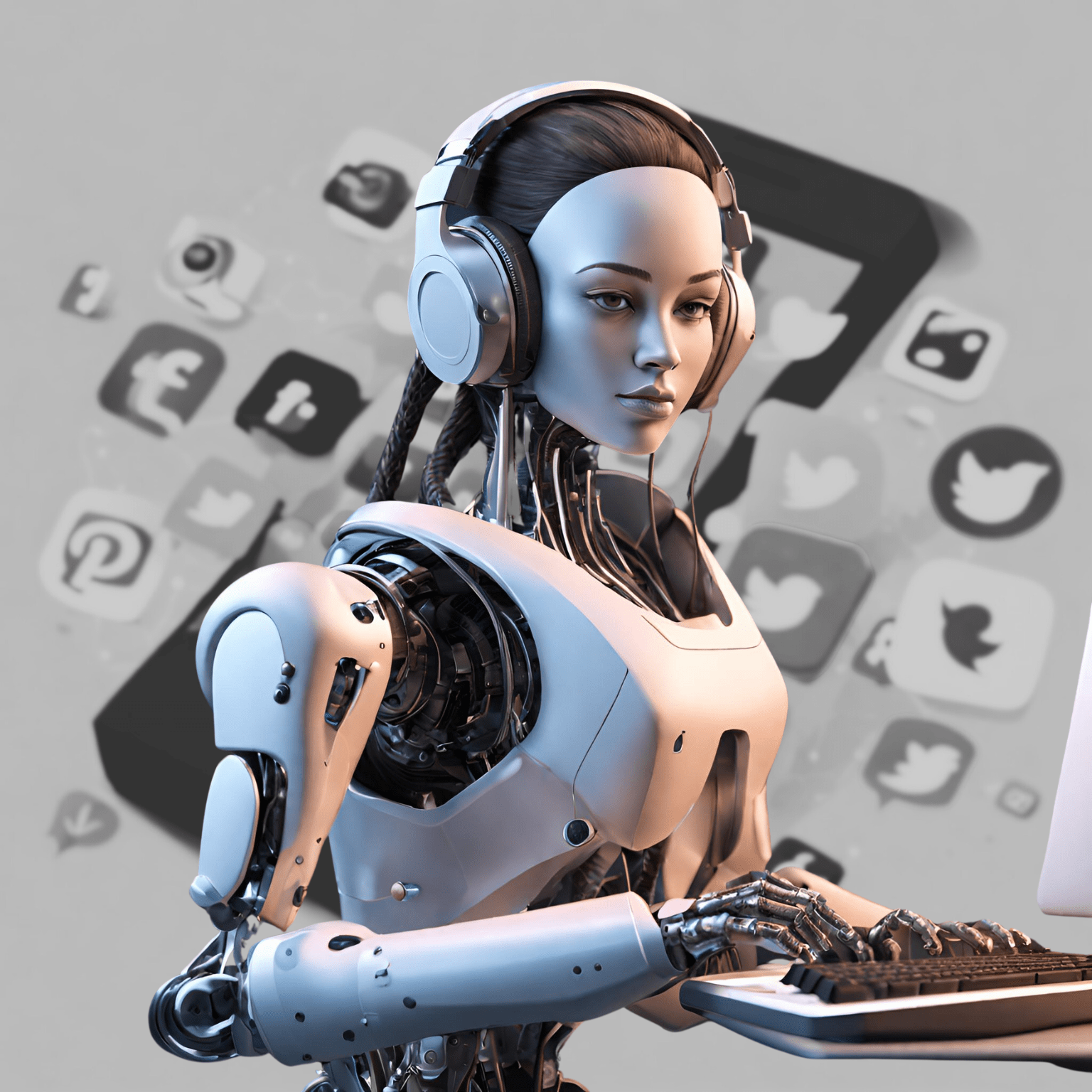Hardly a day goes by without an article being published about the opportunities or risks of artificial intelligence (AI). AI is here to stay and its impact on our lives is growing. But if you ask us how we imagine AI, we usually think of a humanoid robot: human-like, white, slim, hairless, with metal parts on its body, human eyes, sometimes even facial expressions… or outstretched robotic hands.
A study by Meinungsmonitor Künstliche Intelligenz, a project of the Department of Communication Science at Heinrich-Heine-University and the Center for Advanced Internet Studies, also shows that the German population primarily associates AI with practical applications such as autonomous driving or robotics.
We know little about what exactly AI is and where we encounter it, because our idea of artificial intelligence is very vague. How much is our perception shaped by the media?
AI in the media
With every real advance in the field of artificial intelligence, hype, myths, misconceptions, and inaccuracies increase. This makes AI systems magical, unfathomable, and inaccessible in the eyes of the public.
We’ve all seen headlines like „AI can do this“ or „AI does that. All of these headlines have one thing in common: they talk about artificial intelligence as something that can act. Instead of saying that humans can use an AI system to do …, these headlines give the impression that an artificially intelligent being performs an action on its own initiative and according to its own wishes.
When we talk about AI systems, it is important that we do so in a way that makes them visible as socio-technical structures imbued with human choices and errors, rather than as neutral technical systems. We need to be careful that human work does not disappear behind the facade of fancy AI systems.
AI as shiny humanoid robots
The media often conveys a stereotype of AI: a shiny, mostly white, humanoid robot in a stereotypical scenario supposedly representing our technological future. Along with the ubiquitous Terminator imagery, these depictions of robots are perhaps the most visible misconceptions and inaccuracies about AI.
AI Misconceptions
Absurd sexualization and perpetuation of gender stereotypes
Default whiteness
Robots doing ridiculous activities
Do we still need to ask why robots need to be sexualized? Why do they have breasts? Why do they have smiles and seductive looks?
Sexualizing robots is just one part of a larger problem facing artificial intelligence more broadly. Much has been written about the damage done by sexualizing AI assistants like amazon’s Alexa, and we’ve also seen how AI systems can perpetuate gender bias in hiring and enable new forms of harassment against women.
Another striking feature of these robots is that they are overwhelmingly white. So are the humans who operate them. As Dr. Beth Singler found in her study of the „AI Creation Meme,“ the human hand was white in all 79 examples she found.
Why are they always white?
The whiteness of these robots seems to be a classic case of white as the default color. In their essay „The Whiteness of AI,“ Stephen Cave and Kanta Dihal point out the problems with this overwhelming whiteness when they write, „AI racialized as white enables the complete erasure of people of color from utopian notions of whiteness. By emphasizing white as the default color of the future, these images help to imagine a technological future that excludes people of color in much the same way that Big Tech does today.“
Do robots dream about equipment they don’t need?
Less serious, but not uncommon, are the many images of robots operating electronic devices they don’t really need. The most common culprits are
Robots typing on keyboards…
… Robots with headphones and laptops in the classic „call center“ image…
…and robots with headphones typing on keyboards with lots of flying neon Internet icons sticking out of their chests.
Abstract, futuristic, or science fiction-inspired images of artificial intelligence make it difficult to understand the already significant social and environmental impacts of this technology. In addition, images that portray AI as sentient robots obscure the responsibility of the people who actually develop the technology. Such images can also stoke fears, and research shows that these images can be tainted by historically conditioned assumptions about gender, ethnicity, and religion.
There are simple rules to avoid the problem of inappropriate robots. After all, using artificial intelligence in the service sector doesn’t mean talking to humanoid robots. It’s software, not white robots with headphones. Chatbots are computer programs. They don’t have hands, they don’t type.
Recommendations
Use the term „AI“ with care
Clearly emphasize the role of humans
Emphasize the limitations of today’s AI-based programs
Highlight the limitations of AI
Present progress in context
DO NOT
Imply autonomy where none exists
Describe programs as „learning“ without further qualification
Ignore failures
In summary, we can say that the media tends to focus on economic and technical issues rather than socio-political ones. We find out which company is using AI, when and where, and what progress has been made in AI technology. However, it is important to remember that artificial intelligence is just a computer program – nothing more.
Myth: AI has agency | AI Myths
To the German translation of this article: KI-Mythen in den Medien
